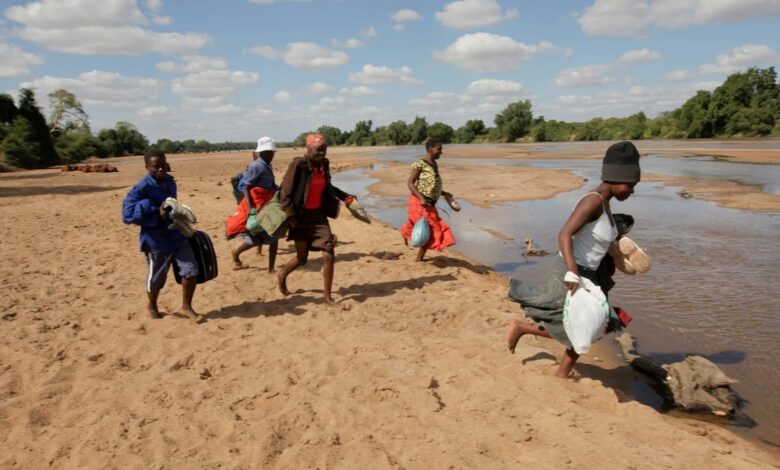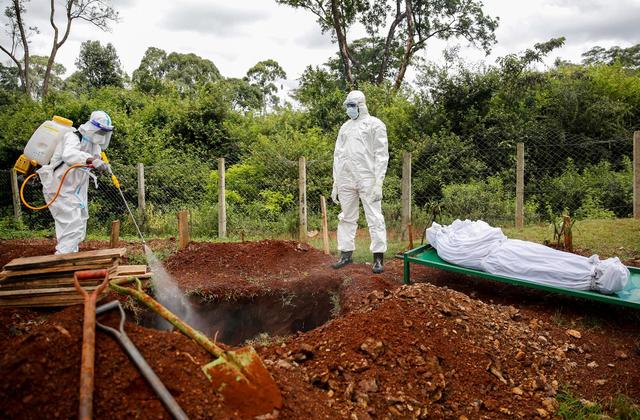Border Management Authority hails new drones as ‘game-changer’ at SA ports of entry

Just before Easter, the Border Management Authority (BMA) announced the implementation of drones to help combat illegal border crossing. This has paid off, with an increase of 61% of people intercepted or apprehended at ports of entry.
“It’s a game-changer,” BMA commissioner Michael Masiapato told the media on Monday, 28 April as the authority unpacked Easter period statistics at the country’s ports of entry.
Runner’s high – it’s a thing for a reason. No matter how tough the run, the rush is always worth it.
Earlier in April, Home Affairs Minister Leon Schreiber and the BMA announced the implementation of drones in a bid to curb the illegal border crossing into the country.
At Monday’s briefing Masiapato said the use of drones this year had a “serious impact”.
“Just in a period of 10 days we have been able to intercept and apprehend a total of 6,253 persons who were attempting to either enter or exit South Africa illegally,” he said.

The Border Management Authority uses drones, body cameras and other technology to protect the nation’s borders. (Photo: Lerato Mutsila)
About 4,795 of those people were undocumented, 1,055 people were undesirable and 403 were found to be inadmissible for various reasons, including fraudulent visas and failure to provide yellow fever certificates.
In addition to the 6,253, “about 112 individuals were arrested at the ports of entry and/or border law enforcement area for various reasons and were handed over to members of the SAPS for further processing”.
Masiapato said the “majority of these individuals served as facilitators of illegal activities around the ports of entry and were therefore charged for aiding and abetting according to section 49(2) of the Immigration Act”.
The interceptions of 61% could be “attributed to the deployment of hi-tech surveillance drones and body-worn cameras”.
Asked by journalists about the use of drones, Masiapato said this had been a “game-changer”.
When drones were deployed, “what effectively happens is we are then able to communicate with the border guards on the ground” through devices and then officials could detect who was trying to enter the country illegally and where, and intercept them.
Masiapato added that drones have made it easier to carry out targeted interceptions, helping officials to identify facilitators who bring people into the country.

(Photo: @PresidencyZA / formerly Twitter)
“When you have intercepted 10 people, you ask them who is the facilitator. They will never tell you who the facilitator is and guess what, we deport all of them,” he said.
Even after deportations, facilitators had gone back to facilitating illegal migration within hours.
Masiapato said: “We could not be talking the way we are talking today last year in April because we did not have the drones.
“So, from where we are sitting now, we are saying the issue of the drones is a game-changer, but more importantly, because they enable us to be able to arrest the facilitators… the more we take facilitators out of the value chain, the more we start having some impact because the vicious cycle has been continuing forever.”

A Zimbabwean rushes to go through a border fence while illegally crossing into South Africa near Musina on 26 May 2008. (Photo: John Moore / Getty Images)
In December 2024, Daily Maverick took a deep dive into the South Africa-Zimbabwe smuggling network via Musina, near the border, which has been a long-standing problem because the border is porous.
Masiapato also said there were about 1,057,063 movements across the 71 ports of entry in South Africa, an increase of 8% over the previous Easter period. In 2024’s Easter period the country registered about 974,729 at the ports of entry.
“This upward trend highlights the growing demand for cross-border travel in the post-Covid period.”
Source: DM





